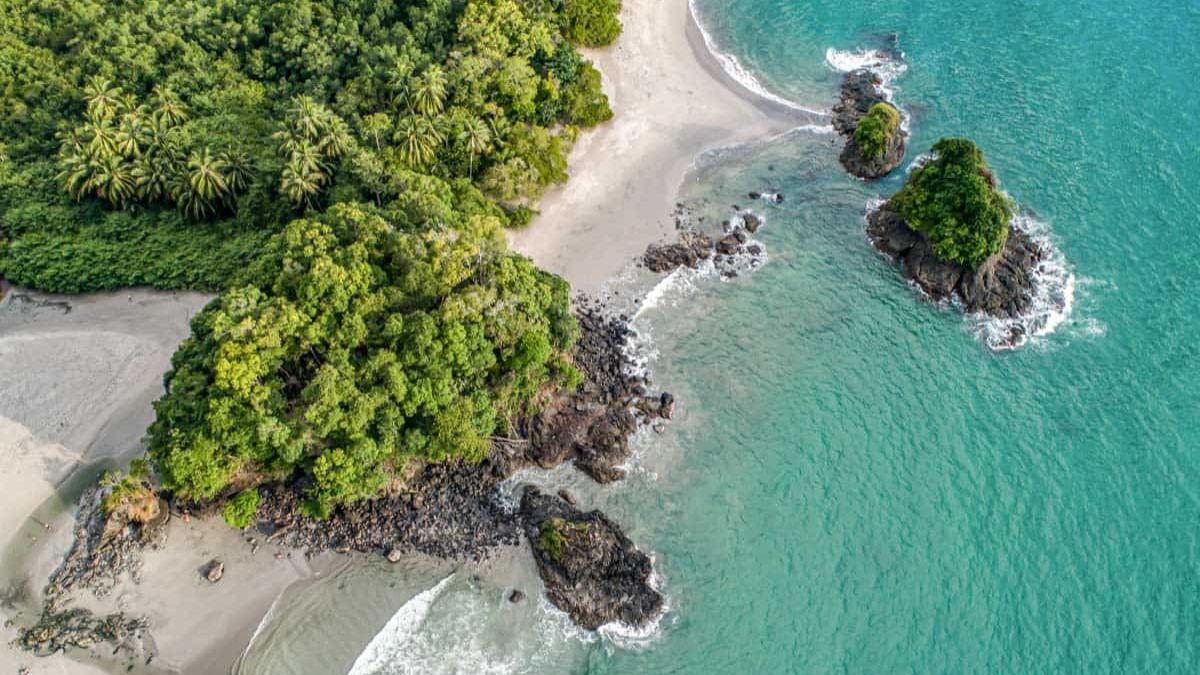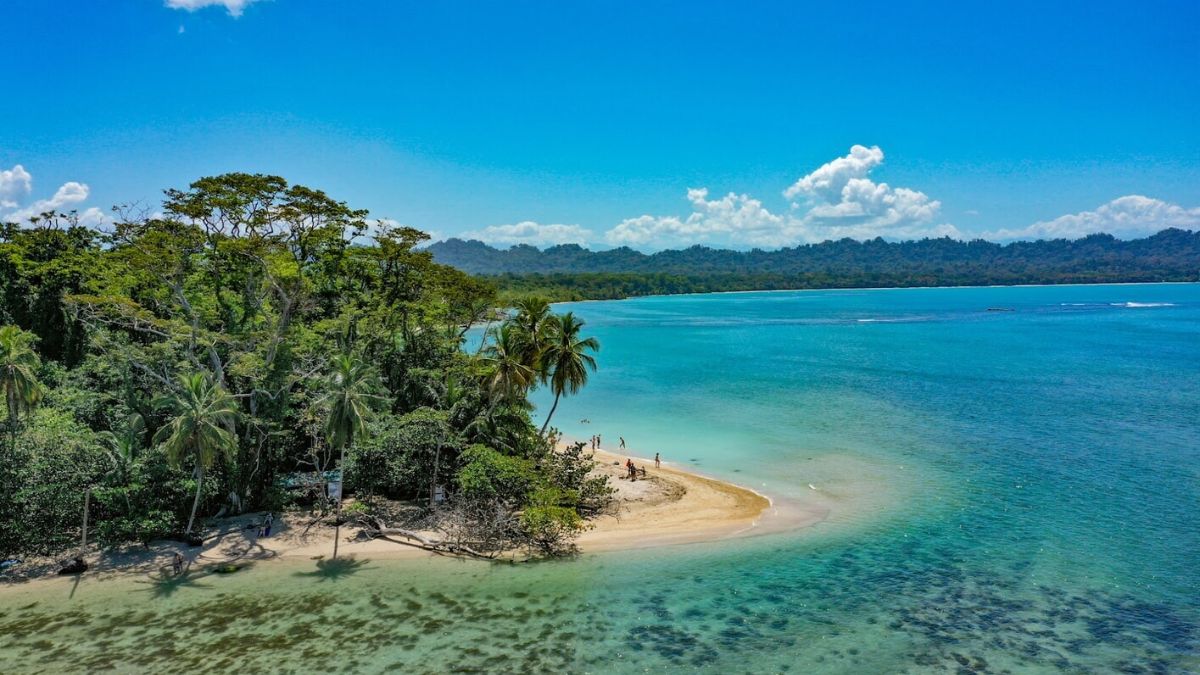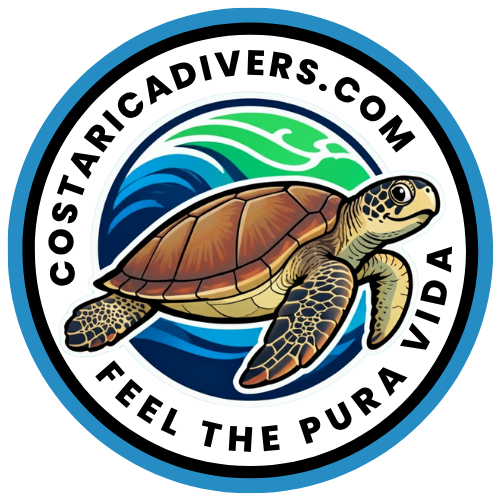I need to be upfront with you from the start. Costa Rica is famous for many things: cloud forests, volcanoes, sloths, zip lines, and incredible biodiversity. But world-class snorkeling? That’s not what most people think of when they book a trip here.
And yet, after more than a decade guiding snorkelers and divers from my base in Uvita on the southern Pacific coast, I can tell you this: Costa Rica has some genuinely spectacular underwater experiences. You just need to know where to look.
The problem is that most visitors make the mistake of grabbing a mask and fins, walking into the ocean at their beach resort, and expecting crystal-clear water full of tropical fish. Then they get disappointed when they can barely see their own hands in front of them.
This guide will save you from that disappointment. I’ll share the spots where snorkeling in Costa Rica actually delivers, explain why most beaches fall short, and give you the honest local perspective on what to expect. Whether you’re a complete beginner or an experienced snorkeler, you’ll know exactly where to go and when to go there.
Here’s the truth that most travel websites won’t tell you: Costa Rica is not the Caribbean. It’s not the Maldives. If you’re expecting gin-clear water and massive coral reefs like you’ve seen in travel magazines, you need to adjust your expectations.
So why do the beaches disappoint snorkelers? Two main reasons.

First, Costa Rica has some of the most consistent waves in the world. That’s fantastic news for surfers, but all that wave action stirs up sand and sediment along the coastline.
Second, the country has an extensive river system. During the rainy season especially, these rivers carry enormous amounts of sediment from the mountains down to the ocean. The result? Murky water along most of the coast.
But here’s where it gets interesting. Move away from the mainland beaches to offshore islands and protected marine reserves, and everything changes.
Did you know? Costa Rica has over 800 miles of coastline and more than 7,000 documented marine species. That’s roughly 3.5% of all marine life on Earth, packed into a country smaller than West Virginia.
The water clears up dramatically. Marine life is abundant and completely unafraid of humans. And suddenly you understand why people rave about snorkeling in Costa Rica.
The secret is knowing which spots actually deliver on the promise. That’s exactly what I’m going to share with you.
Timing matters more here than in many other snorkeling destinations. Get it right, and you’ll enjoy visibility of 60 feet or more. Get it wrong, and you might struggle to see 10 feet in front of your mask.
The Pacific coast follows a predictable pattern. The dry season runs from December through April, and this is when snorkeling conditions peak. Rainfall drops significantly, rivers carry less sediment, and the ocean calms down.

January through March typically offers the best visibility at spots like Caño Island. I’ve had trips where we could see 80 feet down, which honestly rivals anywhere in the world. April remains good, though afternoon clouds start building toward the end of the month.
May marks the transition into rainy season. Conditions become unpredictable. Some days are excellent, others get washed out by morning rain. By June through November, you’re taking a gamble. We still run trips when conditions allow, but cancellations happen regularly due to poor visibility.
The Caribbean side plays by completely different rules. There’s no real dry season over there. Rain falls pretty much year-round, and that means visibility can be challenging more often than not.
That said, September and October tend to be the driest months on the Caribbean coast. This is your best window for spots like Cahuita National Park. March and April can also offer decent conditions between weather systems.
Understanding this connection helps you make smarter decisions during your trip.
Heavy rain anywhere in the watershed, even way up in the mountains far from the coast, eventually affects ocean visibility. After a big storm, it can take three to five days for the water to clear, even at offshore islands.
Wind matters too. Strong winds create surface chop that stirs up sediment in shallow areas. Calm mornings almost always offer better snorkeling than windy afternoons.
My advice? Check conditions the day before and stay flexible with your schedule. A snorkeling trip on the right day beats three trips in poor conditions.
The Pacific side offers the most accessible and reliable snorkeling in Costa Rica. Let me walk you through the options, starting with my personal favorite.
If you only snorkel one place in Costa Rica, make it Caño Island. I’ve taken thousands of visitors here over the years, and the reactions are consistently the same: pure amazement.
Caño Island Biological Reserve sits about 12 miles offshore from the Osa Peninsula. That distance from the mainland is exactly why it works so well.
The sediment-laden water from rivers and beaches simply doesn’t reach here. Instead, you’ll find visibility that regularly exceeds 50 feet and sometimes hits 80 feet during peak season.

The marine life matches the visibility. White-tip reef sharks patrol the rocky outcrops. I spot them on nearly every trip, and they’re completely harmless to snorkelers. Hawksbill and olive ridley sea turtles glide past without any concern about your presence.
Getting to Caño Island requires a boat trip from either Uvita, Drake Bay, or Sierpe. The journey from Uvita takes about 50-60 minutes by speedboat. Tours typically include two snorkeling sessions at different sites around the island, so you get plenty of time in the water.
Did you know? Caño Island was sacred to Costa Rica’s indigenous peoples for centuries. Archaeologists have discovered mysterious stone spheres on the island, some weighing several tons, that date back over 1,500 years. Nobody knows exactly how they were made or what they represented.
One thing to keep in mind: Caño Island is a protected biological reserve with strict visitor limits. Tour operators need permits, and only a certain number of snorkelers can visit each day. During high season, I recommend booking at least a few days ahead.
The experience is absolutely worth the effort and cost. This is world-class snorkeling that happens to be in Costa Rica, not typical Costa Rica snorkeling that happens to be acceptable.
Ready to experience Caño Island for yourself? Book a snorkeling tour to Caño Island and see why this is my top recommendation.
Up in Guanacaste province, the Catalina Islands offer another excellent offshore snorkeling experience. These rocky islands sit about 15 miles from Playa Flamingo and attract an impressive variety of marine life.
The star attraction here is manta rays. The Catalinas are famous for giant oceanic mantas that visit regularly, especially from December through May. Seeing a manta with a 15-foot wingspan glide past you is something you won’t forget. They’re gentle, curious, and completely safe to be around.

Beyond the mantas, you’ll encounter white-tip reef sharks, sea turtles, octopuses, moray eels, and plenty of tropical fish. The underwater terrain features dramatic rock formations, walls, and swim-throughs that make exploration genuinely exciting.
Most tours to the Catalina Islands depart from Playa Flamingo, Tamarindo, or Playas del Coco. The boat ride takes 30-45 minutes depending on where you start.
Visibility at the Catalinas varies more than at Caño Island since the islands sit closer to shore and can be affected by mainland runoff. January through April typically offers the clearest water.
Tortuga Island looks like a postcard come to life. White sand beaches, swaying palms, turquoise water. It’s beautiful, and day trips here are extremely popular with tourists staying in the Central Pacific region.
For snorkeling specifically? It’s hit or miss.
The area called “Los Morteros” near Tortuga Island has rock formations in shallow water that attract fish. On a good day with calm conditions and decent visibility, it’s a pleasant experience, especially for beginners who want easy conditions.

On a bad day, visibility drops below 15 feet and the whole experience becomes underwhelming. The island sits close enough to the mainland and river systems that conditions can fluctuate a lot.
If Tortuga Island fits your travel itinerary and the weather cooperates, the snorkeling can be enjoyable. But I wouldn’t plan an entire trip around it or choose it over Caño Island or the Catalinas if you have options.
Most tours to Tortuga Island depart from Puntarenas, Jacó, Montezuma, or Paquera.
Manuel Antonio is Costa Rica’s most visited national park, and for good reason. The combination of rainforest wildlife, beautiful beaches, and easy access makes it a must-see destination.
The snorkeling? It’s a nice bonus, not a highlight.
The main beach inside the park has a protected cove where you can snorkel in calm, shallow water. You’ll see colorful parrotfish, wrasses, damselfish, and occasionally a sea turtle. For families with kids or beginners who want easy, safe conditions, it works well.

But the visibility rarely impresses anyone. The beach sits at the base of the park where streams empty into the ocean. Even during dry season, you’re unlikely to see more than 15-20 feet on a good day.
Several tour operators offer catamaran trips from nearby Quepos that combine sailing, snorkeling, and sunset viewing. These can be fun experiences, but don’t expect the underwater portion to rival dedicated snorkeling destinations.
Living in Uvita, I get asked about local snorkeling options constantly. Here’s my honest take on the situation.
Marino Ballena National Park protects one of the largest coral reefs on the Central American Pacific coast. The park is famous for the “whale tail” sandbar formation and for the humpback whales that visit during migration seasons.
Snorkeling conditions in Marino Ballena are seasonal and depend heavily on your exact location. During dry season, particularly in February and March, certain sites around Ballena Island and Punta Uvita can offer good visibility and interesting marine life including sea turtles, rays, and tropical fish.

During rainy season, I don’t recommend it. The Térraba River, one of Costa Rica’s largest, empties into the ocean not far from here. That sediment spreads throughout the area and makes visibility pretty poor.
We offer snorkeling tours in Marino Ballena during appropriate conditions. For visitors with limited time who can’t make the trip out to Caño Island, it provides a taste of Costa Rica’s underwater world close to Uvita.
The Caribbean side of Costa Rica offers something completely different. The coastline is more remote, the culture has a distinct Afro-Caribbean flavor, and the marine ecosystems differ significantly from the Pacific.
Cahuita National Park protects the most important coral reef on Costa Rica’s Caribbean coast. The reef system extends over 600 acres and supports more than 35 coral species and 120 fish species.
A major earthquake in 1991 caused significant damage to parts of the reef, but it has been slowly recovering ever since. Today, snorkeling here gives you the chance to see brain corals, elkhorn corals, sea fans, and plenty of reef fish including angelfish, butterflyfish, and parrotfish.
The bigger attractions are the larger marine creatures. Nurse sharks rest in sandy patches between coral heads. Southern stingrays patrol the bottom. Spotted eagle rays occasionally cruise through. Green sea turtles are common sightings throughout the area.

There’s an important catch though: you have to take a guided boat tour to snorkel the reef at Cahuita. Swimming out from shore isn’t permitted in the protected areas, and honestly, the best spots aren’t accessible from the beach anyway.
Visibility at Cahuita varies considerably. The Caribbean coast gets rain year-round, and sediment from banana plantations along rivers affects water clarity. September and October typically offer the best window, with March and April as secondary options.
Tours usually operate from the main Cahuita town pier and last 2-3 hours. Local guides know the reef well and can show you the best spots for wildlife sightings.
South of Cahuita toward the Panama border, several beaches offer snorkeling when conditions cooperate.
One of the most beautiful beaches in Costa Rica. White sand backed by jungle, with a small reef offshore. The reef is accessible from shore during calm conditions, making it popular with independent snorkelers. Expect colorful fish, occasional stingrays, and the chance to spot sea turtles.
Sits within the Gandoca-Manzanillo Wildlife Refuge. The beach has a reef close to shore and is one of the few places in Costa Rica where you might spot manatees in nearby mangrove areas. Snorkeling here can be quite good when visibility cooperates.
Quieter option between Punta Uva and Puerto Viejo. Rocky areas along the beach hold fish, and on calm days, the water can be remarkably clear.
The challenge with all Caribbean coast snorkeling is unpredictability. I’ve heard from travelers who had amazing experiences with 40-foot visibility and others who could barely see anything. Check conditions locally, stay flexible with your plans, and don’t build your entire Caribbean itinerary around snorkeling.
Tour prices vary based on location, duration, and what’s included. Here’s what you can expect to pay.
Most tours include all snorkeling equipment. If you prefer using your own mask for better fit and comfort, that’s usually fine. Bringing your own gear doesn’t typically reduce the price since the cost is primarily boat operation and guide services.
Here’s my honest rating of the main snorkeling locations covered in this guide. Ratings are out of 5 stars based on visibility, marine life abundance, and overall experience.
| Location | Visibility | Marine Life | Accessibility | Overall |
|---|---|---|---|---|
| Caño Island | ★★★★★ | ★★★★★ | ★★★☆☆ | ★★★★★ |
| Catalina Islands | ★★★★☆ | ★★★★★ | ★★★☆☆ | ★★★★★ |
| Cahuita National Park | ★★★☆☆ | ★★★★☆ | ★★★☆☆ | ★★★★☆ |
| Tortuga Island | ★★★☆☆ | ★★★☆☆ | ★★★★☆ | ★★★☆☆ |
| Manuel Antonio | ★★☆☆☆ | ★★★☆☆ | ★★★★★ | ★★★☆☆ |
| Marino Ballena | ★★★☆☆ | ★★★☆☆ | ★★★★☆ | ★★★☆☆ |
| Punta Uva | ★★★☆☆ | ★★★☆☆ | ★★★★★ | ★★★☆☆ |
If you have time and budget for only one snorkeling excursion in Costa Rica, choose Caño Island. The experience justifies the higher cost and travel time. It’s genuinely world-class.
For travelers in Guanacaste, the Catalina Islands provide an excellent alternative with the bonus of potential manta ray encounters.
If you’re visiting the Caribbean coast, Cahuita National Park offers the most interesting reef system and marine life, though visibility depends heavily on conditions during your visit.
Costa Rica may not top the lists of famous snorkeling destinations, but the underwater experiences available here surprised me when I first arrived and continue to impress me years later.
The key is knowing where to go and when to go there. Skip the beach snorkeling at your resort. Budget time and money for a proper excursion to places like Caño Island or the Catalina Islands. Visit during dry season if your schedule allows. And approach the whole experience with realistic expectations and an open mind.
Not always, but for the best experiences, yes. Places like Caño Island, Catalina Islands, and Cahuita National Park require boat access and often have regulations requiring guides. You can snorkel independently at beaches like Punta Uva or Manuel Antonio, but the experience rarely compares to guided trips to offshore locations.
Absolutely. Water temperatures are warm year-round, tours provide life jackets and instruction, and most snorkeling sites have calm conditions suitable for first-timers. Let your guide know you’re new to snorkeling so they can provide extra support.
Yes, and it’s one of the highlights. White-tip reef sharks are common at Caño Island and the Catalina Islands. Nurse sharks frequent Cahuita on the Caribbean coast. All these species are harmless to humans and typically unbothered by snorkelers.
Pacific coast waters range from 77-84°F (25-29°C) depending on season and location. Caribbean waters stay consistently warmer at 80-84°F (27-29°C) year-round. Most people find the water comfortable without a wetsuit, though a rash guard provides helpful warmth during longer sessions.
Both offer excellent experiences. Caño Island typically has better visibility and more reliable shark sightings. Catalina Islands offer the chance to see giant manta rays, especially from December through May. Choose based on your location in Costa Rica since both require significant travel to access.
Technically yes, but conditions vary dramatically by season. Pacific coast snorkeling is best from December through April during dry season. Caribbean coast conditions peak in September-October. During rainy season months, visibility drops and many tours experience higher cancellation rates.

Author: Peter Sawicki
Peter Sawicki is a PADI instructor with many years of experience and hundreds of certified students to his name. He is a technical diver, cave explorer, and climbing instructor with a background that spans both big wall expeditions and demanding technical ice climbs. Recognized multiple times with the prestigious PADI Elite Instructor Award, Peter combines deep professional knowledge with a passion for sharing the world of adventure, both underwater and above it.


